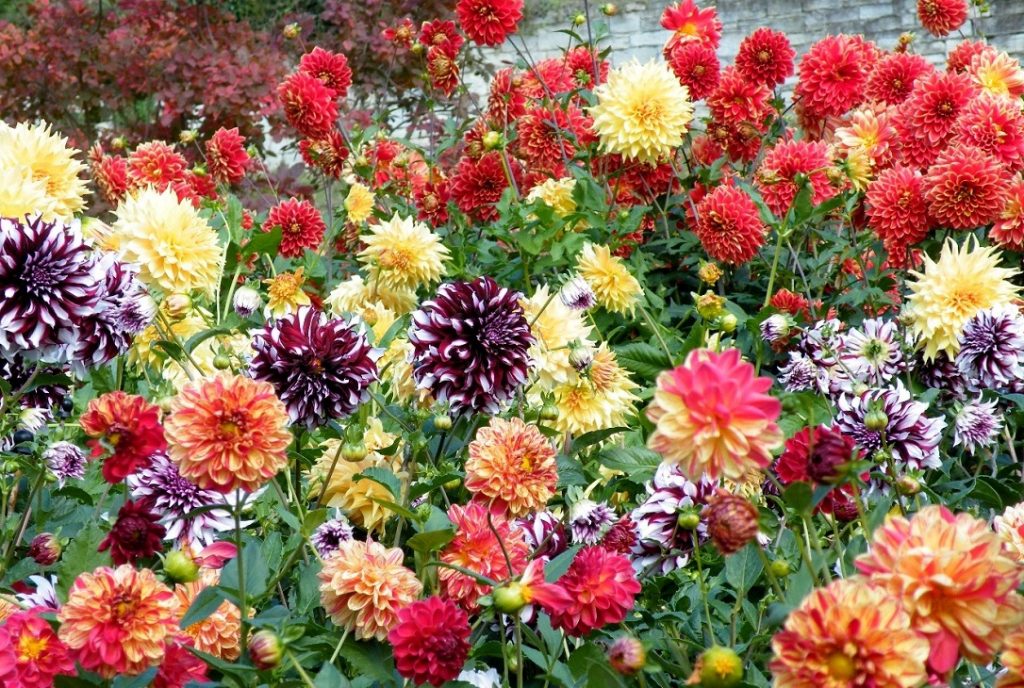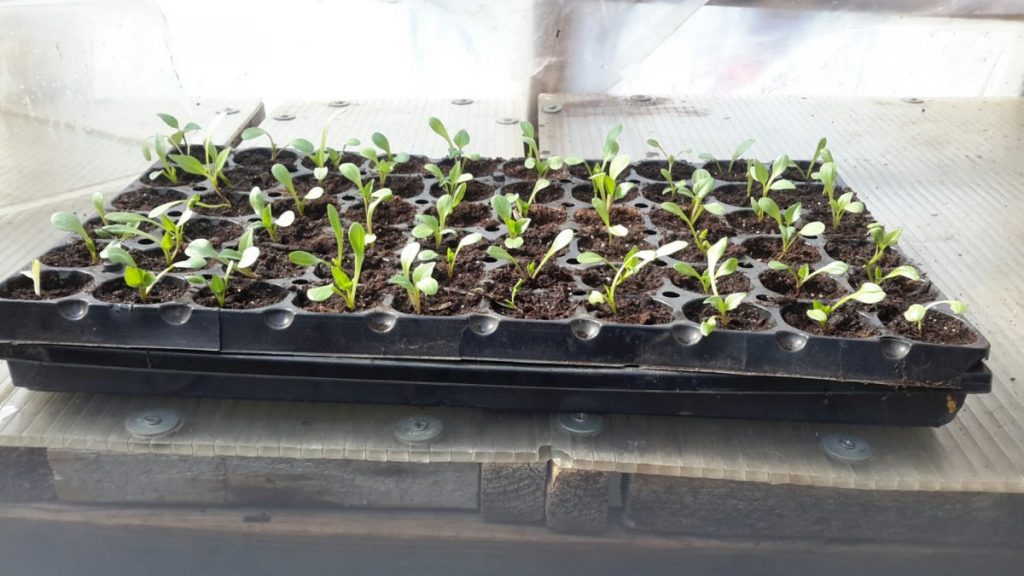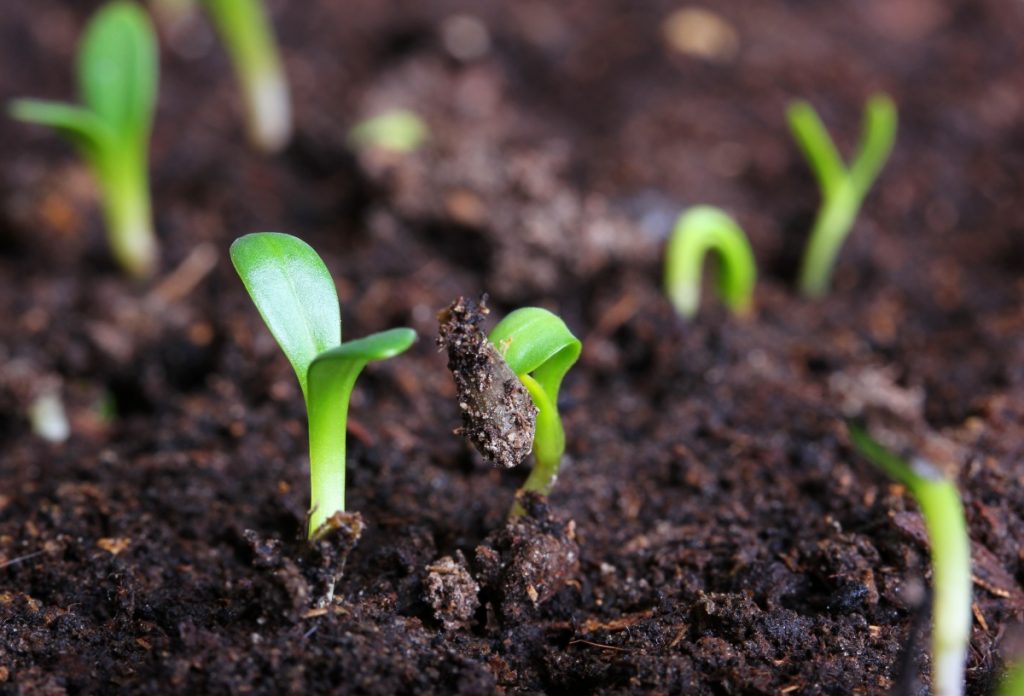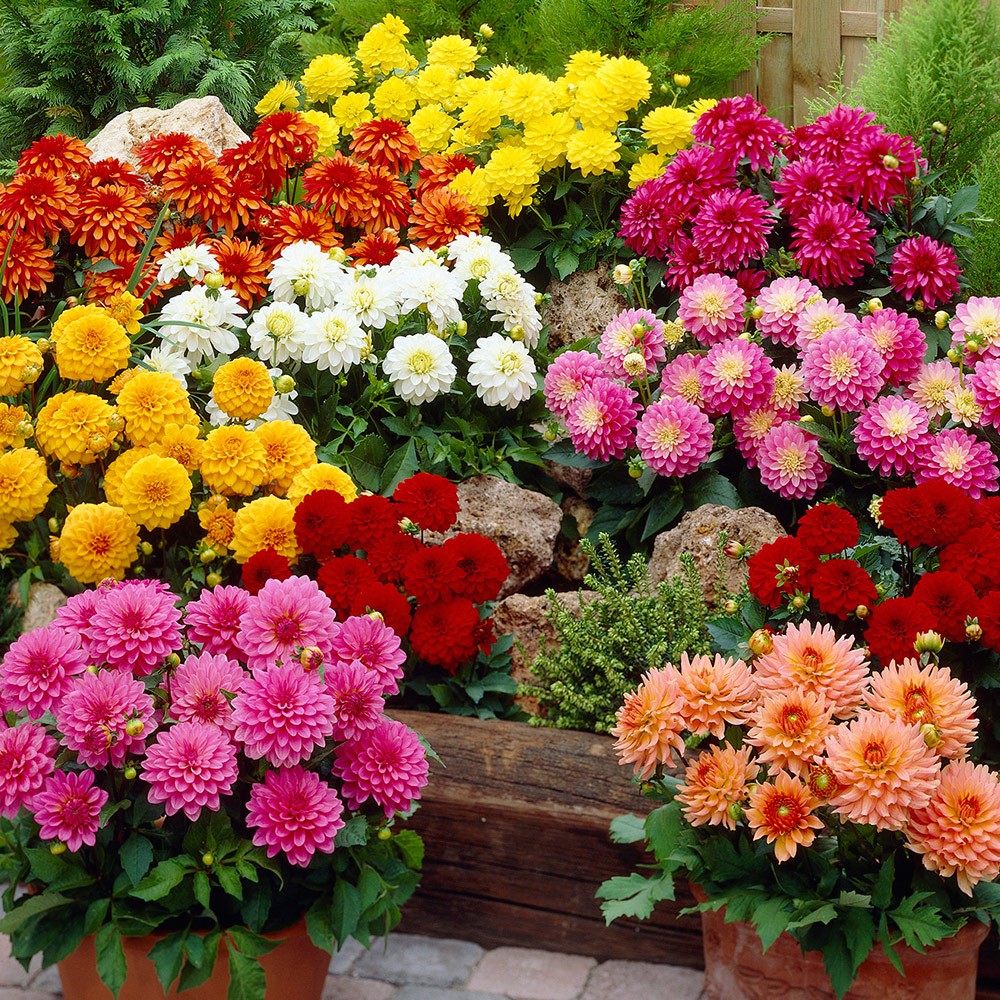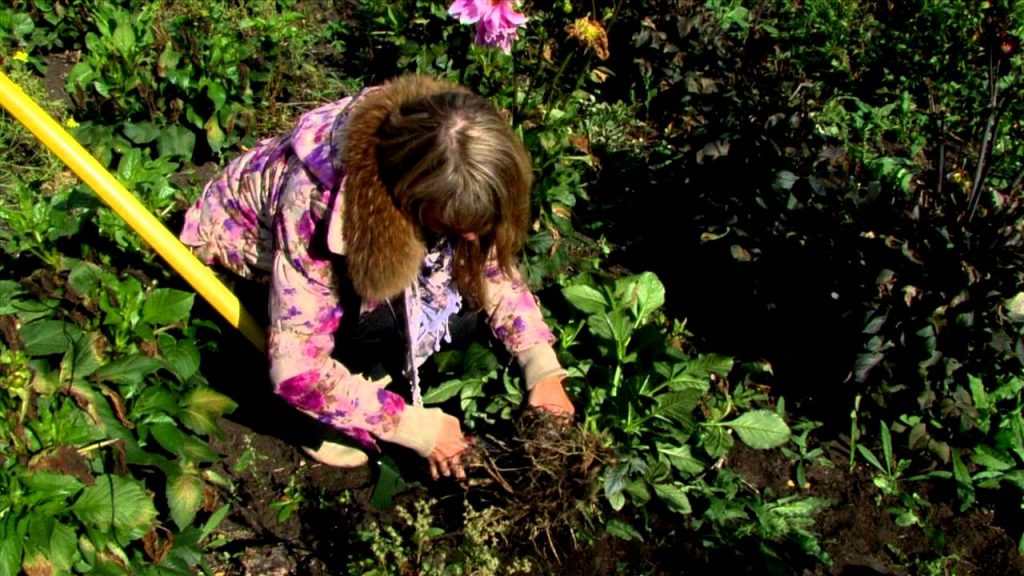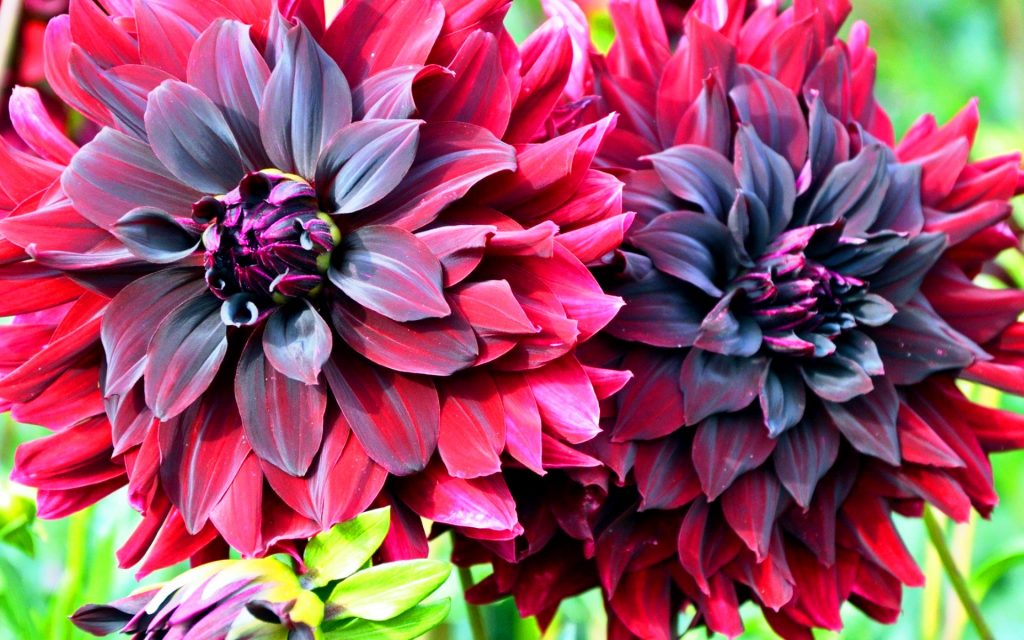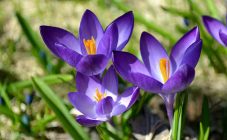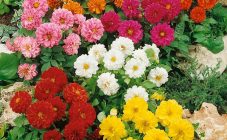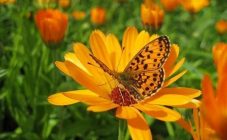Dahlias, planting and caring for which in the open field have many nuances and features, are considered almost the most decorative flowers. Their rich assortment of shades, long and violent flowering, as well as a variety of varieties and shapes, captivate the grower to decorate their flower beds with them. From mid-summer until the very frost, they will delight the eye and deliver untold pleasure not only to the owner, but also to his guests.
Agrotechnics of culture
Dahlias are members of the Astrov family. Thanks to the work of breeders, more than 10 thousand different varieties are already known, differing not only in color, but also in shape. The plant is unpretentious and does not require special care, but it has its own characteristics in agricultural technology, without which it will be impossible to admire the riot of colors in your flower bed.
In order to properly prepare and plant dahlia tubers in a flower bed, you need to know the main requirements for their successful cultivation, namely:
- plant requirements regarding the choice of a place for planting;
- the necessary composition of the nutrient mixture;
- the frequency of watering;
- features of feeding;
- features of the formation of a dahlia bush.
Dahlias, planting and further care of which do not cause great difficulties for the gardener, do not impose special requirements on lighting. Any area is suitable for their planting, however, in the shade, the flowers will open up small and dull, but with good lighting, the decorative qualities are significantly improved. Homemade dahlias are best grown in partial shade, but if this is not possible, then a solar flower bed located in a place protected from the wind will do.
By their nature, dahlias, the care of which will not be difficult, are heat-loving plants, therefore they prefer a warm climate for their cultivation. In the Moscow region, they are planted in open ground only after spring has finally come into its own, and the threat of night frosts has passed. The Urals and Siberia are not suitable for growing all varieties of this majestic flower. Some varieties of dahlia can be cultivated in greenhouse conditions.
In the choice of soil, dahlias are also not capricious.
Absolutely any soil is suitable for their cultivation, but the best decorative qualities can be boasted when planting in:
- black soil;
- loamy soil;
- sandy loam soil.
In the event that acidic soil predominates on the site where the dahlia planting is planned, then lime, ash or dolomite flour should be added to it first. Such work usually takes place in the fall, but everything can be done right before planting the tubers of your favorite dahlias in the ground. If the soil is alkaline, then it should be slightly acidified by adding peat. To increase the air permeability of heavy soil, river sand, peat and leaf humus are added to it.
For the cultivation of dahlias to be successful and pleasing to the eye, they need not only proper care, but also planting. At the bottom of the hole, it is imperative to lay a layer of drainage, which is used as broken brick or expanded clay.
Dahlia breeding
If the gardener does not have the desire or the physical ability to dig up and save dahlia tubers every season, then they can be grown from seeds as an annual flower. There is nothing complicated in this procedure, you just need to sow the harvested seeds into shallow grooves, then moisten them a little and wait until shoots appear. As soon as young plants have two pairs of true leaves, they are planted in a permanent place of growth. A legitimate question arises: can annual dahlias be re-pollinated? Experienced gardeners assure that such cases have not been encountered in their practice. However, due to the fact that when propagated by seeds, the genetic characteristics of the mother plant are poorly inherited, some varietal characteristics are lost. Next year, you can get a perennial bush from seed-grown dahlias. By and large, cross-pollination can also occur with those flowers that were grown from tubers, but this happens very rarely.
Reproduction by dividing the root is carried out at the end of April, about a month or one and a half before the dahlia planting in open ground. For these purposes, a nutritious soil mixture is poured into the pot, and then the germinated dahlia tuber is placed there. It must necessarily protrude a couple of centimeters above the ground level. Pots with tubers are placed in a well-lit place (if the temperature and conditions permits, it can be taken out to the balcony). The optimum temperature for their maintenance is + 18 ° C. As soon as buds are formed, the tuber can be divided in such a way that at least one healthy bud with a root collar remains on each part. Each part of the rhizome is sent back to the grow pot. When to plant dahlias outdoors? As soon as the released lateral shoots reach a height of 10 centimeters, they are removed, and the nodules are sent to a permanent place of growth.
There is another way to breed dahlias - cuttings. To do this, you can use the lateral shoots cut before planting the nodules. They are placed in a bowl filled with a nutrient substrate, after which it is removed to a dark place, remembering to periodically water. As soon as the roots appear, new dahlias can be transplanted into the flower bed.
Growing dahlia from seeds
Nowadays, growing annual dahlias from seeds is becoming more and more popular. You can set a cheerful tone to the garden without unnecessary hassle and work, even without having prepared tubers in advance. Any variety is grown in this way. Plants are great for growing in pots or small containers.
Seed for planting is used both purchased and collected independently. Moreover, in the latter case, it is not always possible to obtain flowers with characteristics similar to the mother. Dahlias from seeds are grown by direct sowing in open ground or by seedlings. If you sow seed directly on a flower bed, then flowering will be somewhat belated. Despite this, most gardeners prefer this simple and affordable method. For the middle lane, in this case, choose varieties with a short growing season.
The timing for sowing dahlia seeds in a flower bed is determined solely by weather conditions. Plants are distinguished by good cold resistance, but not frost resistance in any way, therefore it is better not to rush to sow them. Most often, the time for carrying out these works falls on the month of May, but you should be guided by weather forecasts for your region.
Before sowing the seeds, the bed is well leveled and shallow grooves are made at a distance of 25 cm from each other. If the area is small, then you can sow dahlias directly into the holes.2-3 seeds are placed in each of them, then gently sprinkled with earth and watered abundantly. If necessary, you can cover the planting with cellophane to avoid excess moisture evaporation and accelerate the emergence of seedlings. As soon as the sprouts of the dahlias hatch, they can be opened. After that, let the young plants grow stronger for a couple of weeks. Further, if the seedlings are thickened, they are planted.
Plant care
How to care for dahlias to enjoy a riot of colors throughout the season? There is nothing complicated in this matter. The main condition is to water them in a timely manner, feed them and mold the bush. If mistakes were made regarding the peculiarities of agricultural technology, then the flowers can be affected by diseases and be negatively affected by pests (aphids, wireworms, earwigs, spider mites, slugs, bugs, etc.). So that the dahlias do not become smaller during flowering, at the age of 2-3 years, the bush is divided.
Any plant requires attention and care, and in return thanks for beautiful flowers. How to properly care for dahlias in the summer so that they bring joy to others? The soil under the bush should always be moist. Within a week after planting a dahlia on a flower bed, irrigation is performed daily. In the subsequent period, this procedure is sufficient to carry out a maximum of a couple of times a week. With an excess of moisture in the soil, the tubers can rot or simply survive the winter worse. After watering, it is imperative to loosen the soil in the near-stem zone. To prevent excess moisture from evaporating from under the dahlia, mulch is used. It can be sawdust, hay or needles.
How to tie up dahlias so that they do not fall, and the bush has an attractive appearance? Tall varieties simply need to be tied to supports, since in a gust of wind, the hollow stem breaks easily. It is not necessary to strengthen the undersized variety.
So that the flowering is abundant, and the colors do not fade and are pleasing to the eye, dahlias must be fed every couple of weeks. For these purposes, mineral and organic fertilizers are alternated. As soon as the first buds appear, superphosphate and potassium fertilizer are applied under the bushes. Top dressing with nitrogen content for dahlias unnecessarily. August is the final month for feeding. Otherwise, the tubers will not tolerate winter storage well.
Throughout the summer, the plants need to form the bushes, which consists in the constant removal of faded buds and lower lateral shoots in tall varieties. If the faded buds of dahlias are not cut off in time, the formation of new ones will be inhibited, as a result of which flowering is delayed, and the bush becomes not so attractive. To make the inflorescences as large as possible, only 3 buds are left on each bush, and the rest are cut off. In order to avoid thickening of the dahlia bush, after planting, a couple of the strongest shoots are selected, and the rest are removed. On the left processes, pinch the growth point from the fourth pair of leaves. Over time, similar procedures are performed on lateral shoots.
Sometimes, in the middle of the season, there is an urgent need to move or redevelop a flower bed. It is clear that your favorite flowers are blooming at this time, but you can solve the problem. The flowering dahlia is transplanted together with a large clod of earth to a new place, after which the plant is watered abundantly.
Wintering dahlia
Home dahlias care is stopped in late autumn. With the onset of the first frost, when the tops of the flowers die off, the tubers must be dug out of the flower bed and moved to a suitable storage, where they will not be afraid of the cold winter. In the spring, the planting material will again go to the beds.
After removing the tuber from the ground, the stems are cut with garden shears at the level of 10-15 centimeters. It is advisable to dig up flowers in dry and sunny weather. To do this, a bush is dug in from all sides at a distance of 30 cm, then with the help of a pitchfork, the tubers are removed from the ground, shaken off, washed and dried for several hours in the sun, or left for a couple of days in a closed room.
The final preparation before sending for winter storage is reduced to etching the dahlia rhizomes. Potassium permanganate solution, Maxim or Vitaron preparations are used for these purposes. After these procedures, the planting material must also be dried. Tubers should be stored in a room with an air temperature of + 2- + 7 ° C or in a refrigerator. They are placed in a plastic bag or box filled with sand, sawdust or peat. Now the method of wrapping the roots with cling film is very popular, but for some, personal experience of such storage was not very successful. Although many argue that the preservation is very good, and the occupied space is saved.
During storage, dahlia tubers must be constantly examined for decay or germination. If the roots begin to sprout ahead of time, they are removed from a cool storage and planted in a container filled with nutrient soil (for example, in a flower pot). Do not bury the nodules too deep, you just need to sprinkle them with earth a little.
It is impossible not to love dahlias. The variety of varieties and colors, long flowering and majestic appearance make the garden unique and stylish. The dacha looks like a piece of paradise, especially if you combine this beauty with other flowers (for example, irises or peonies). You can also plant dahlias in front of a green lawn, which will look no less charming. To maximize the effect, the inflorescences are large, and the colors are bright and colorful, you just need to follow the recommendations on agricultural technology. Even beginners who do not have a lot of practical experience in floriculture will be able to cope with the cultivation of dahlias on their site.
